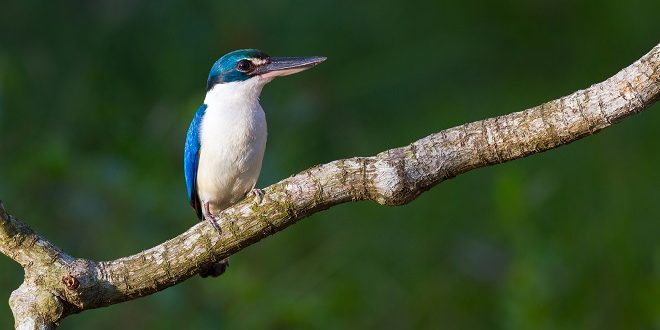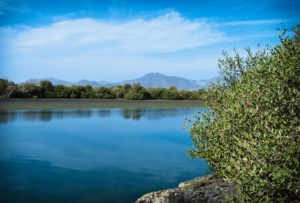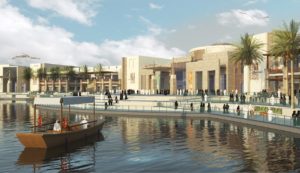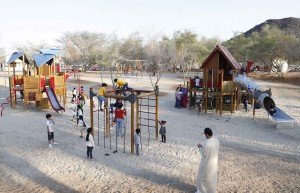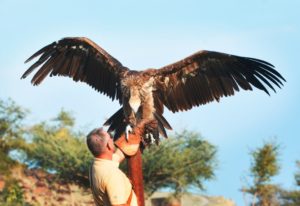Far from the bright lights and skyscrapers of the United Arab Emirates’ west coast, Kalba has long been reputed for its peace, tranquility and areas of natural beauty. Now the Kalba Eco-Tourism Project, the largest eco-tourism project in the United Arab Emirates, aims to create a sustainable platform for tourism development. However, the government has been careful to ensure that conservation comes first.
The Government of Sharjah’s strategic plan to develop Kalba’s tourism infrastructure, being led by Sharjah Investment and Development Authority (Shurooq), in coordination with local authorities and Sharjah’s Environment and Protected Areas Authority (EPAA), aims to both make the most of the region’s natural attractions and manage the impact of tourism on the environment.
In 2012, His Highness Dr. Sheikh Sultan bin Mohammed Al Qasimi, Supreme Council Member and Ruler of Sharjah established Alqurm wa Lehhfaiiah Protected Area via Emiri Decree No. 27. The decree created a protected conservation area of about 5 square kilometres to include Khor Kalba (Kalba saltwater creek), Kalba Lagoon and the surrounding wetlands, salt marshes and mangrove forest. Recognised by The Convention on Wetlands of International Importance (Ramsar) in 2013, the protected area supports a vital ecosystem for a number of endangered species, including the Arabian Collared Kingfisher (Todiramphus chloris kalbaensis).
The focus of commercial and leisure infrastructure development is in the area surrounding the man-made Kalba Lagoon, constructing a lake-side corniche with gardens, retail spaces and public facilities for residents and visitors. The 11,204 square metre Kalba Waterfront Mall on the edge of the lagoon is being developed by Omran Properties, opening in the third quarter of 2019. Other projects include more parks and landscaped areas, plus a central fountain for the lagoon and man-made islands. The construction of a new Kalba ‘ring-road’ will be completed later this year, in an effort to reduce traffic congestion in the town area.
Within Kalba’s fenced-off wetlands and mangrove forest, development plans are limited to providing ways for visitors to observe and appreciate the area’s natural biodiversity, whilst protecting the ecosystem and wildlife. The most notable of these is the new Kingfisher Lodge, which was promoted by Shurooq at this year’s ITB Berlin and is due to be completed in summer 2017. Named after the area’s native Collared Kingfisher, with views of the Gulf of Oman and Kalba’s mangroves, the new tourist lodge will house 20 luxury tents with private swimming pools and five-star facilities.
A variety of hotel and tourism projects are planned for outside the protected area including a five-star hotel, luxury tented resorts, tourist camping sites another leisure areas. One of the first projects, Al Hafiya Picnic Park was opened to visitors in 2015.
Meanwhile, Al Hefaiyah Mountain Conservation Centre and protected area, close to the Sharjah-Kalba road, has been developed by the EPAA to protect endangered animal species native to the region’s fragile mountain ecosystems and create a world-class tourist attraction. The 12 square kilometre wildlife conservation centre borders the the Hajjar mountains and focuses on habitat preservation and restoration, education, rehabilitation, captive breeding and research. Sharjah is a long-time sponsor of wildlife breeding programmes, establishing the Breeding Centre for Endangered Arabian Wildlife (BCEAW) about twenty years ago.
The mountain conservation centre has tourist facilities and employs full-time trained guides to show visitors the reserve and answer questions about Arabian wildlife. The reserve is home to the Critically Endangered Arabian leopard (Panthera pardus nimr) and other endangered species including the Arabian wolf (Canis lupus arabs) and the Arabian tahr (Arabitragus jayakari), which are both classified by the IUCN as ‘Threatened’; and the striped hyena (Hyaena hyaena), which is classified as ‘Near-Threatened’. Recently, the centre has enjoyed particular success in breeding endangered Damani gazelles from breeding stock introduced in 2012.
Kalba Bird of Prey Centre was opened in 2014, on the outskirts of Kalba town, which accommodates a variety of resident and migratory raptors. Visitors to the centre can see birds of prey such as the Barn Owl, Short Toed Snake Eagle, Greater Spotted Eagle, and Lappet Faced Vulture. Live demonstrations and bird of prey displays are held daily for visitors during the winter months.
Environmental experts are cautiously optimistic about the results of efforts to protect Kalba’s wetlands and mangroves. During the past two years, EPAA researchers have identified 120-150 sea turtles on the Kalba coast and in the mangrove marshes (green turtles, loggerhead turtles and hawksbill turtles), including species that haven’t been seen in the area for 30 years. A state-of-the-art turtle rehabilitation centre is planned for the future to offer emergency care, research, monitoring, and long-term treatment, plus managed access for visitors to see the turtles.
Source: Shurooq, EPAA

